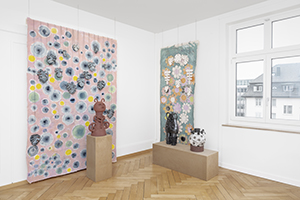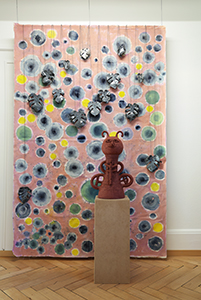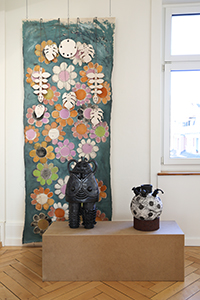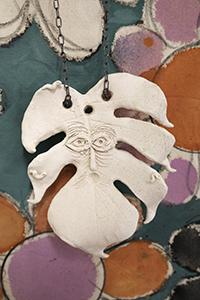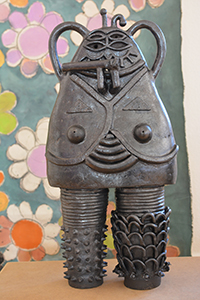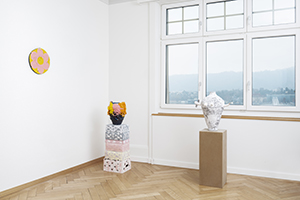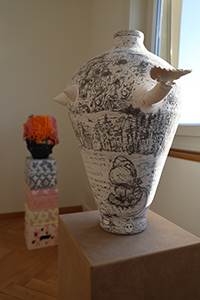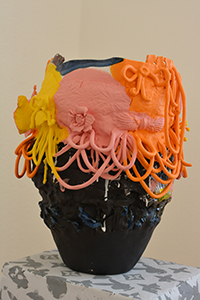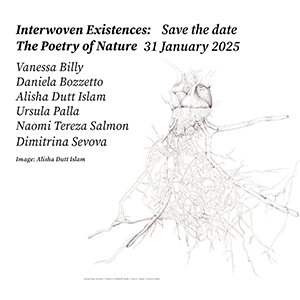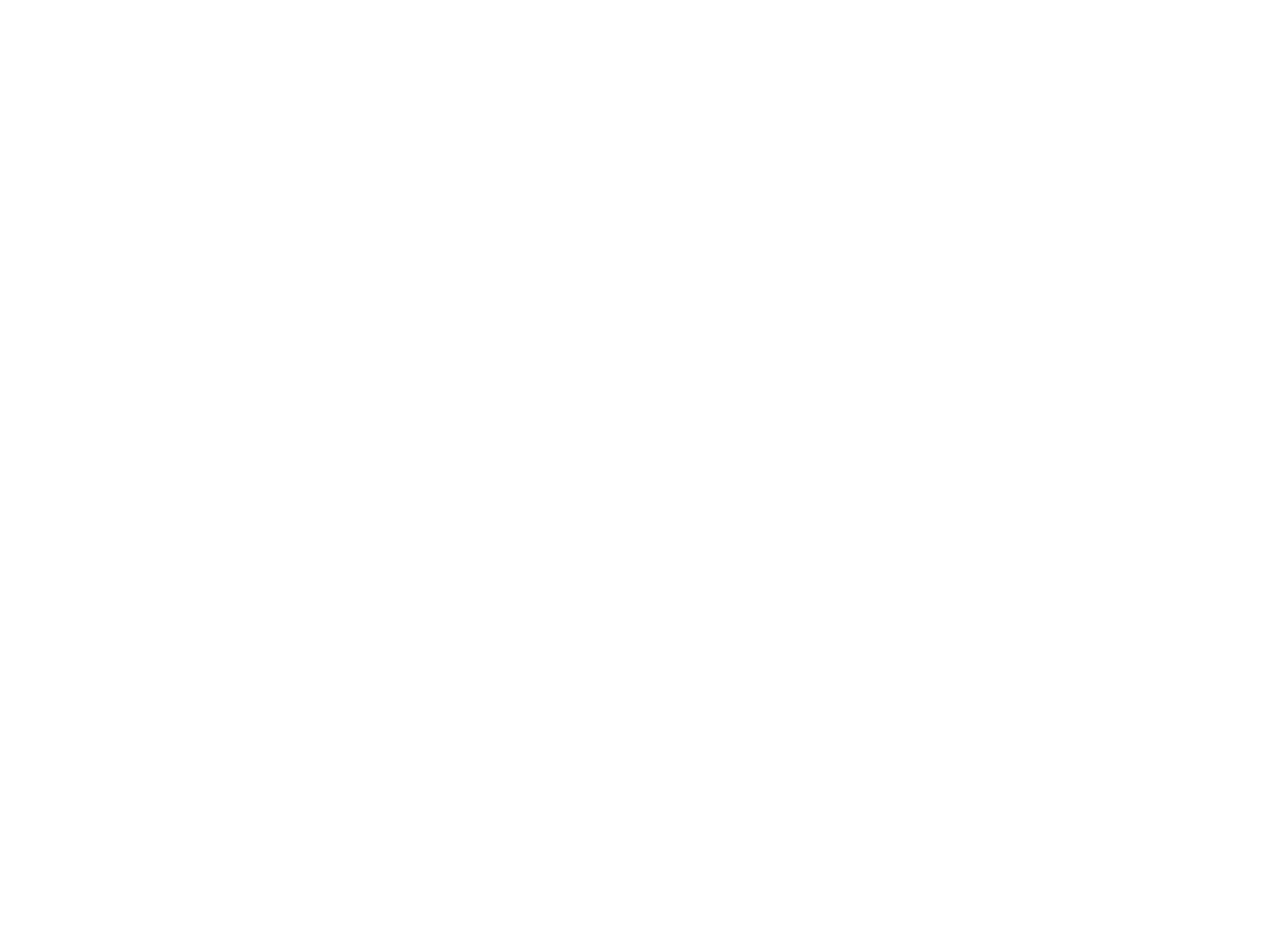
Peperudcho, Bozha Kravichka – Gregor, And My Other Significant Otherness, 2025
Sculptural installation of hand-built, sculptural ceramic objects, paintings on freestanding canvas with chains and ceramic elements. Dimensions variable.
Dimitrina Sevova, Peperudcho, Bozha Kravichka – Gregor, And My Other Significant Otherness, 2025. Exhibition view in Interwoven Existences: The Poetry of Nature, Beletage Art Space, Zürich. Photos: Sebastian Stadler, and courtesy of the artist
Dimitrina Sevova, Peperudcho (Mayfly) with Dreamy Monstera Painting, 2025
One of a series of insect ceramic sculptures metamorphosing into humans, or humans into insects, where I am engaged with the material form inspired by the material itself, made from the point of view of the specificity of the red Brasil clay. On the other hand, it is also about an imaginary insect or figure. It is a kind of night bug whose melody can be heard in summer nights. It is based on my observations walking in nature, but also shaped by a net of references. The vulnerability of these creatures associates them with ephemera, and most importantly their metamorphosis in both a biological and metaphorical sense.
Dimitrina Sevova, The Bones of My Desires and the Noise of the Bugs, 2025
My firebug exhibits transgression with two sides, one cute, and one rather scary. I call it Gregor, after Gregor Samsa from Franz Kafka’s Metamorphosis. Kafka’s protagonist wakes up one morning from uneasy dreams to find himself in his bed, transformed into a gigantic insect. The story describes the burnout of a loyal and devoted young man who gives his all to his company and family.
Dimitrina Sevova, Lux, Sunflowers, and Sweet Dreams, 2025
The assemblage consists of a hand-built vessel from black and Ming porcelain, multiply glazed with underglaze to reach a vibrant color intensity, which brings something exaggerated, almost grotesque into this piece that feels like it is almost falling apart but is actually quite strong. The boxes stacked on top of the other are made of stoneware with recognizable engobed patterns. For their form, I used the negative of real shipping cardboard boxes. The pillar of boxes with the vessel on top evoke the material archeological evidence of a refined civilization, with the connotation of ruins from art history from Renaissance to Walter Benjamin's fashion. I also play between sculptural object and expanded painting.
Interwoven Existences
Group exhibition
Opening Fri 31 January 2025, 18:00h - 20:00h
at Beletage Art Space, Utoquai 41, c/o Dr. Rai Winata, 8008 Zürich
Group exhibition, Interwoven Existences, opening 31 January 2025. Flyer
From the curator:
Interwoven Existences: The Poetry of Nature
The exhibition explores the concept of Natura naturata—nature shaped by human intervention—through the lens of Andreas Weber's Poetic Ecology. Weber's approach presents nature as a living, poetic system where all elements are interconnected and in constant interaction. From this perspective, Natura naturata is not simply the result of human manipulation but rather an expression of a creative, poetic relationship between humans and nature. Nature is seen not as a passive backdrop, but as an active, co-creative force.
The Earth is more than a physical place; it possesses memory. Through art, the memory of places, landscapes, and ecological changes is awakened and preserved. Nature thus becomes a source of identity through remembrance. Artificiality plays a central role here: it is not perceived as the opposite of nature but as an extension of the natural system, opening new aesthetic, ecological, and regenerative possibilities. This includes examining how artificial elements can integrate into the living structure of nature. By juxtaposing organic and synthetic materials, the distinction between nature and artificiality is blurred—artificiality here becomes a vibrant part of a poetic ecosystem.
The exhibition delves into the invisible networks and rhythms of nature while also reflecting on the fragile balance within these systems.
